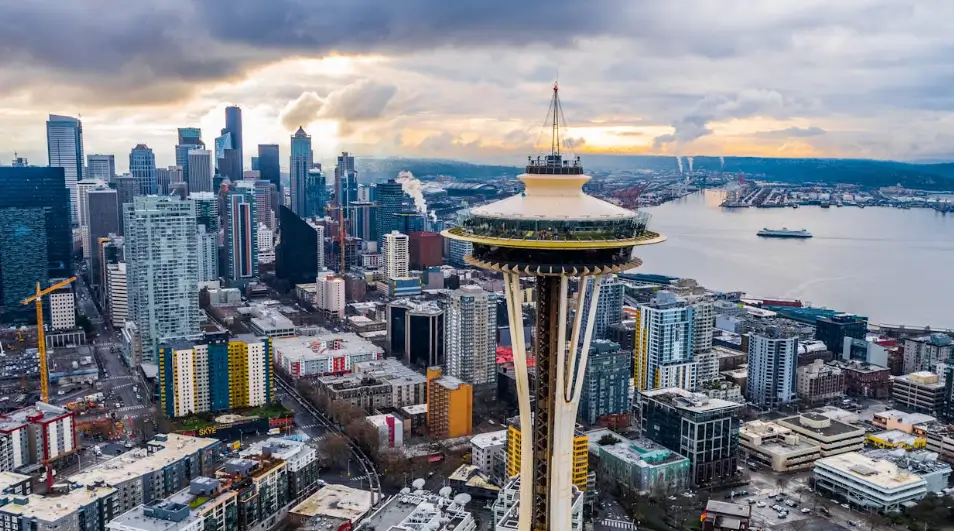Noise Is an Equity Issue
Picture lying in bed with the window cracked open. Instead of crickets or a breeze, you hear trucks shifting gears on the highway, planes taking off overhead, or the steady hum of traffic that never really stops. For many people, that’s not an occasional nuisance—it’s life. And it’s one planners almost never plan for.
More Than Just Annoying
Noise isn’t only about irritation. Studies link chronic noise exposure to disrupted sleep, higher blood pressure, stress, and even reduced learning outcomes in children. The World Health Organization estimates that traffic noise ranks second only to air pollution as the environmental factor with the largest impact on public health in Europe.
In one study, children in classrooms facing an elevated train in New York scored significantly lower in reading than kids on the quieter side. After the city installed noise barriers, the gap shrank. That’s how powerful an “invisible” factor like sound can be.
.webp)
Who Bears the Burden
Noise is not distributed evenly. Research consistently shows that low-income communities and communities of color live closer to highways, rail corridors, and industrial zones.
Dr. Arline Bronzaft, who has spent decades studying the impact of urban noise, once put it plainly: “Noise is another form of inequality. Wealthier neighborhoods get the buffers, the trees, the sound walls. Poorer neighborhoods get the roar.”
In Denver, a 2023 “Sound of Injustice” report revealed that formerly redlined neighborhoods are still the noisiest today, thanks to their proximity to freight lines and highways. What looks like a zoning map from the 1930s ends up as a noise-exposure map in 2025.
What Planning Ignores
Planners measure cars, lots, setbacks, and drainage. But rarely decibels. Setbacks for light and visuals are required. Parking minimums are always on the books. Noise buffering, on the other hand, almost never makes the cut. When noise is considered, it usually comes at the very end of a project, bundled into an environmental review. By that stage, the land use decisions, where housing or schools are located, are already locked in, leaving the people most affected with little or no say.
Rethinking Our Tools
Noise can be addressed, but it takes intentional planning. Cities in Europe are now required to map noise exposure and designate “quiet areas.” Paris even has a “Plan Bruit” (Noise Plan) that identifies hotspots and mitigation strategies.
Closer to home, some U.S. states require sound walls along new highways, but many communities lack the funding or political will.
Planners could:
- Require noise impact studies early in rezoning or large development reviews.
- Zone with noise compatibility in mind—don’t drop apartments next to rail yards without buffers.
- Invest in green barriers: trees, berms, water features. They soften both the look and the sound.
- Map soundscapes to identify where “quiet” should be preserved as a public good.
As sound researcher Antonella Radicchi notes: “Noise is not just the absence of quiet. It’s the presence of injustice.”
.webp)
The Human Side
Ask anyone who’s lived under a flight path or next to a freight corridor. You’ll hear the same thing: exhaustion.
One resident near Atlanta’s I-285 described it this way: “You don’t really sleep. You half-sleep until the traffic eases up at 2 a.m. And then the morning rush starts at 5. It wears you down.”
That “wearing down” isn’t in a zoning code. But it should be.
Why This Matters
If planning is about shaping livable places, ignoring noise is like ignoring air quality or flooding. It’s not a fringe issue. It’s public health. It’s equity. It’s whether people can find rest and dignity in their own homes.
The next time we talk about setbacks, maybe the question shouldn’t only be: How far from the property line? Maybe it should be: Can a child sleep through the night here?
Because that answer says a lot about whether planning is really serving people—or just paper.
%20(1200%20x%20237%20px)%20(300%20x%2059%20px).webp)
.webp)




